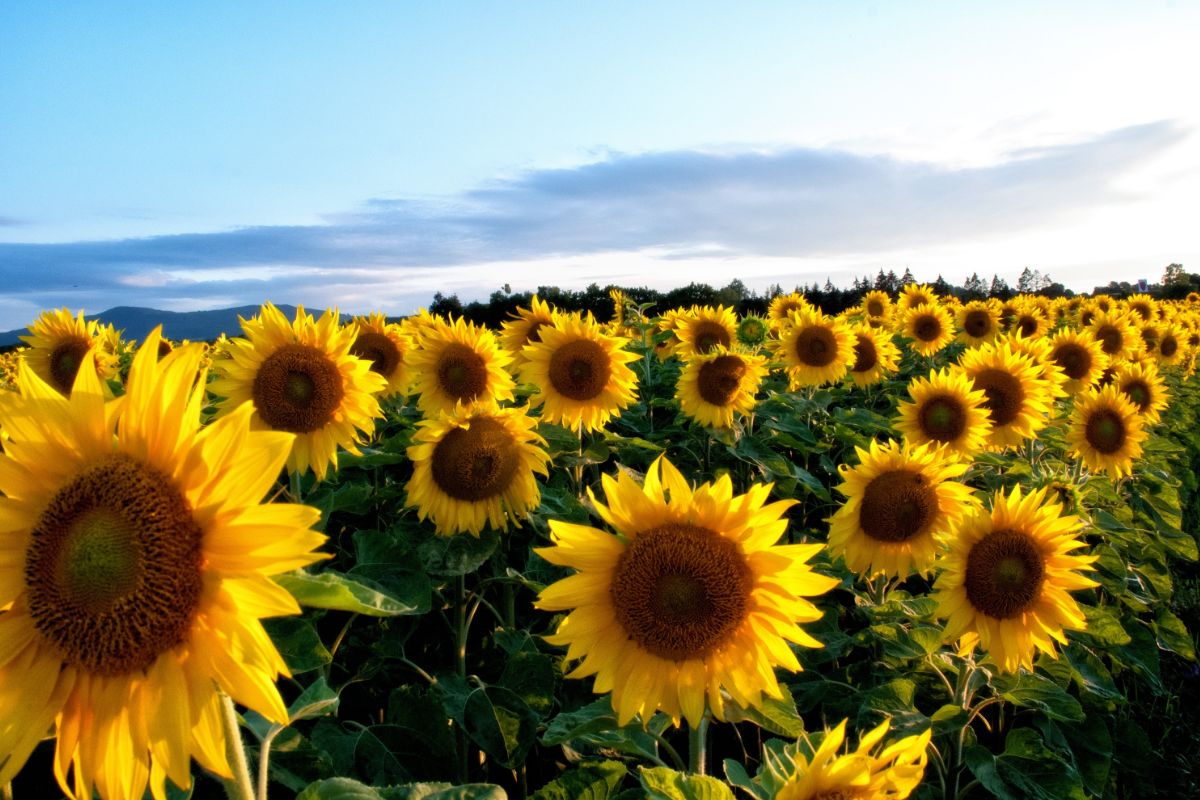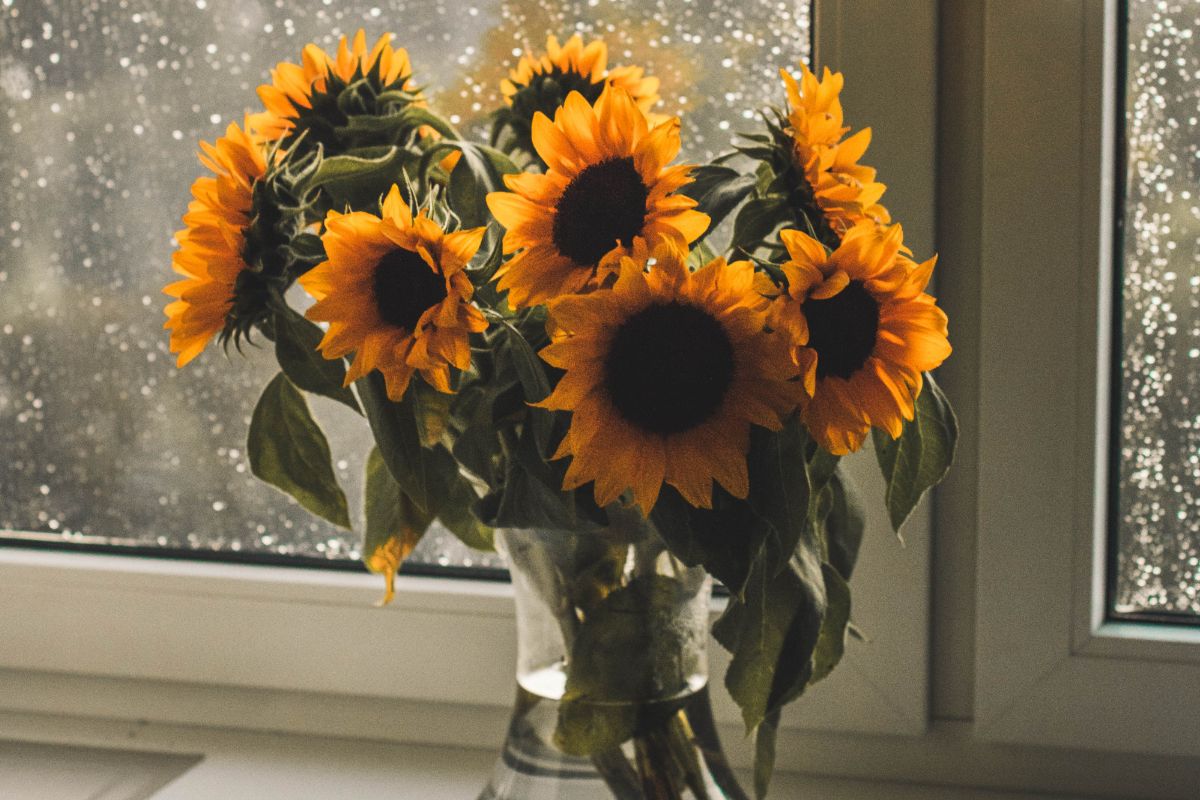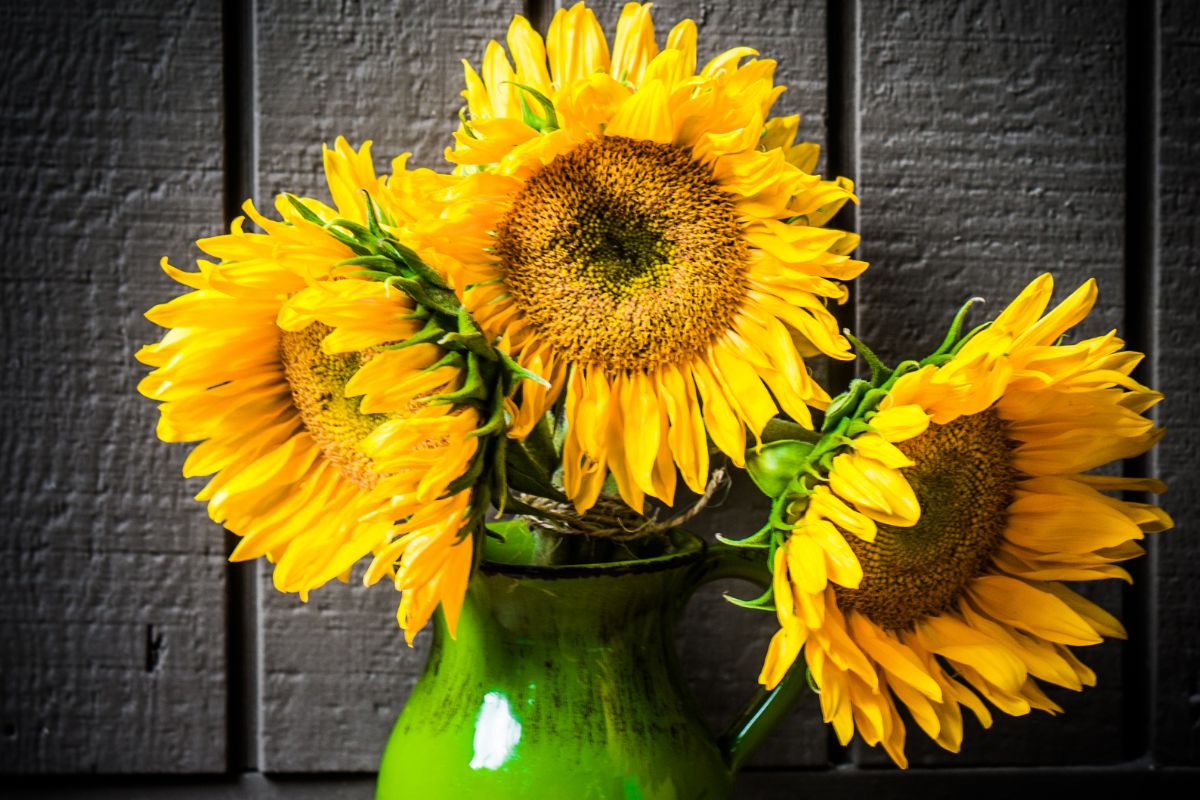Sunflowers are one of the most spectacular and eye-catching plants that you can find. Most people covet them and want them in their gardens to add a splash of color and brightness. However, is this flower actually a flower… or is it more of a weed?

Well, this all depends on what you classify as a weed and how you are cultivating your plants. If you are grooming them in your garden, then this is not considered a weed. However, out in the wild, sunflowers are often considered weeds.
But why is this distinction made? So why is the sunflower considered a weed by some but not by others? Are sunflowers harmful plants to grow? What damage can a sunflower do to other plants?
Well, we have the lowdown on the sunflower so that you can make up your mind once and for all whether or not the sunflower is a weed or not.
What Are Sunflowers?
This is a flower that is known as an ornamental, mainly used to decorate gardens. These flowers grow to be very tall, with green stems, dark brown heads and bright orange and yellow petals.
These flowers are native to North and South America, although they have been exported around the world. There are 70 species of sunflower currently. Sunflowers are also used in many different foods and commodities.
Sunflower seeds are commonly sold as edible food, usually used in things like cereal and baking. They are also squeezed and made into sunflower oil, which is one of the most used cooking oils in the world. The petals of a sunflower are also crushed up and used in yellow dye.
Are Sunflowers Considered Weeds?
This all depends on what state they are growing in and whether you have them in the wild or in your garden. The main distinguishing feature that weeds and sunflowers share is how persistent they are when they are growing.
If you are going to plant them in a garden that is going to be dug up a lot, you’ll see that the sunflowers will be the first plants to grow back. You shouldn’t be surprised to see sunflowers popping up at the very start of spring.
These plants are also what is known as allelopathic, which means that they emit toxins from all of their parts, including the stem and the petals. These toxins are extremely harmful to other plants and it is not uncommon for sunflowers to kill plants immediately near them.
In the state of Iowa, sunflowers are considered to be weeds, mainly because of their tendency to grow quickly and to kill other plants.
Should I Allow Sunflowers To Grow In My Backyard?
If you have noticed wild sunflowers have started to sprout in your garden, then it might cause you to raise an eyebrow. However, there’s no reason why you can’t let these plants grow in one corner of your garden.
These plants are annuals, meaning that they only grow at one specific time of the year, usually in spring, summer and autumn. If you have a garden of perennials, meaning that they flower all throughout the year, then you won’t have to worry about them getting disturbed.
There are plenty of reasons why you might want sunflowers in your garden. If you like drawing birds into your garden, then sunflowers will be a great way of getting them to visit, as they like to eat the seeds.
However, sunflowers do not bloom for long, so you’ll only have these natural bird feeders for a short period of time.
How Can I Tell If I Have Wild Sunflowers In My Garden?

A seedling of a sunflower plant will appear not far above the ground. They have green leaves that are medium to large, and they will usually only appear on disturbed earth. The smaller leaves will appear at the bottom and the larger leaves will appear at the top.
You can either choose to pull the weeds from the ground when they are seedlings or you can leave them in the ground and let them grow during the summer.
If you do want to pull them out, then you will have to make sure that all of the weeds are removed so there is no chance of them regrowing. If you have sown some sunflower seeds, then you can usually expect them to flower anywhere between 11 and 18 weeks.
If you want your sunflowers to appear all through the summer, then sew fresh seeds every few weeks. These flowers are great to grow with kids as they are very easy to plant and you won’t have to wait for too long before you see them growing.
They are bright and yellow and their colors will be very entertaining for young children.
How Can I Grow My Own Sunflower Seeds?
You’ll need to make sure that you plant your sunflower seeds in a semi-shaded spot that has partial exposure to intense sunlight. You need to make sure that there is good soil that comes with plenty of nutrients, whether through fertilizers or fresh manure.
You’ll need to make sure that your young sunflower seeds are protected from slugs and snails as they like to feed on the developing leaves. You’ll need to make sure that your sunflowers are watered regularly, as they tend to drink up a lot of water.
Plant your seeds in early April when the winter is over and there is no chance of snow or frost. You’ll need to make the soil has been tilled and that you have plenty of organic matter in the planting hole so that your young sunflower can feed it on.
If you are not growing your plants against a wall, then you will have to stake them to the floor so that they do not fall over when they grow above a few feet. Some of these plants can grow up to 10 feet tall.
How Can I Take Care Of My Grown Sunflowers?
You’ll need to make sure that you are watering these flowers regularly, as they tend to get very thirsty. You can use tomato feed to nourish young sunflowers just before they start flowering. Tall sunflowers will have trouble recovering if they become too dehydrated and dry.
If you are growing a tall sunflower, then you might have to drive a stake into the ground so that it does not fall as it grows taller. Make sure that you attach it to the stake when it is still relatively young.
If you want to encourage birds to visit your sunflower plants, then leave the plant in the ground even after it has flowered. Once the birds have eaten all of the seeds off the plant, then you can pull the whole thing out of the ground for composting.
How Can I Grow More Sunflowers?

Propagating more sunflowers is always tricky, but you can harvest the seeds during the summer, as the plant will produce plenty of them. You can then plant these seeds the next summer or you can eat them as they are or squeeze them into sunflower oil.
If you are keeping the seeds to plant next summer, then make sure that you store them in a cool and dry place until then. You’ll need to make sure that you protect your sunflowers when they are young, as they are susceptible to slug and snail attacks.
You can use slug pellets to deter them or you can surround your sunflowers with copper tape, as slugs are naturally averse to this material.
What Breeds Of Sunflower Are There?
There are many different varieties of sunflowers that you can find in the wild. Here are just a few of them:
- Tiffany – these are the classic orange and yellow variety that you might have seen in most gardens. They have a dark head with yellow and orange petals and grow up to 6 feet tall.
- Inara Orange – these have orange flowers with a reddish and brown center and are much darker than the more common variety. They grow up to around 5 feet and do not emit pollen.
- Sunrich Gold – these have orange-yellow flowers and a much brighter golden center. These also do not emit any pollen.
- Sunrich Orange – These have orange petals with a dark center, growing up to 5 and a half feet. This is another sunflower that does not emit any pollen.
- Orange Sun – these bloom during August and have a bright orange coloring. They grow up to 5 feet.
- Yellow Discus – these have yellow petals and can grow up to 6 feet tall.
- Prado Gold – this is another sunflower that has a dark center with leaves that are variously described as gold or yellow. They are some of the tallest sunflowers and grow up to 6.5 feet, blooming very early in the year.
- Sonja – these are larger golden flowers that come with a dark center and only grow to just over 3 feet.
- Mezzulah – these are sunny yellow flowers that have a very dark center and can grow in windy conditions. They can grow up to 5 feet tall.
- American Giant – this plant comes with bright yellow flowers and has the biggest height of any sunflower, capable of growing up to an impressive 13 feet.
- Titanium – these have large yellow flowers that measure around 2 feet in width and can grow up to 11 feet tall.
- Golden Hedge – these sunflowers do not give off any pollen and have vivid yellow petals. You can sew these seeds for these sunflowers around late July.
- Snack – these flowers can grow up to 6 feet tall and are largely the breeds that are used for harvesting sunflower seeds due to their high vitamin and mineral content.
- Atlanta – these have golden petals with a dark brown center. They are used to graze insects and can grow up to 8 feet tall.
- Prado Red – These have dark red flowers with a dark, almost black center. They can grow up to 5 feet tall.
- Terracotta – these have orange and yellow petals with a darker center and can grow up to 6 feet tall.
Conclusion
So, is the sunflower a weed? Well, our verdict would be no, as weeds have negative connotations and there is plenty that the sunflower has going for it, including bright and vivid colors and by-products that are incredibly helpful for both animals and humans.
Frequently Asked Questions
This all depends on whether you think they will fit in with your garden aesthetic. Some people will like them as a counterpoint to smaller and more conventionally pretty flowers. It is hard to imagine anyone who wouldn’t like a sunflower in their garden.
- Interesting Flowers That Start With A - July 21, 2023
- Interesting Flowers Beginning With H - July 21, 2023
- 14 Fascinating Flowers That Begin With C - July 20, 2023
